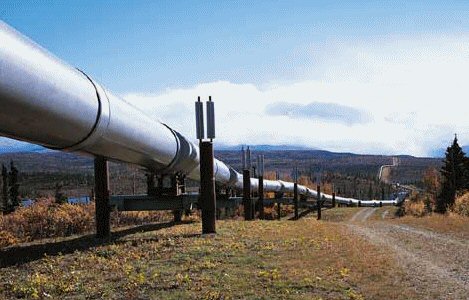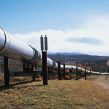
Prospects for Dagestan’s Oil and Gas Industry
Publication: North Caucasus Weekly Volume: 10 Issue: 13
By:

As early as the middle of 19th century, oil was extracted to the surface through wells on the territory of Dagestan. With the participation of Swedish oil industrialist Ludvig Nobel, several relatively shallow oil wells were operating in Dagestan by the end of that century (https://www.caspiy.net/dir3/west/3.html). Yet it was only in the 1920s that systematic studies of the geology of the foothill areas began in earnest, and in 1924 the drilling of deep exploratory wells commenced. In 1936 the first trainload of oil left the Izberbash railway station. In January 1937, in accordance with the order issued by the People’s Commissar of Heavy Industry Sergo Ordzhonikidze, the Dagneft Trust was established. The same year marked the introduction of well drilling under the sea shelf. Dagestan’s oil played an important role in supplying the frontline with petroleum during World War Two, and especially during the period when oil wells near Grozny stood idle (https://vestnik.rosneft.ru/49/article15.html).
According to specialists, the first veto on Dagestani oil reserves was imposed by Stalin. Stalin’s government intentionally kept the volume of oil extraction low in Dagestan. The last time oil was extracted to the maximum possible volume was in 1942, when Nazi forces strove to make it to the Volga River. Stalin again halted oil extraction by the war’s end, although later geological prospecting works were carried out and new oil rigs were erected (https://www.daginfo.com/news/view/1454.html).
All of this is not incidental. Upon examining the situation at hand closely, Iosif Vissarionovich made a decision to turn Dagestan into a strategic oil reserve for the USSR in case of extraordinary contingencies, because of the special quality of the region’s oil. It is formed in the underground layers, which date back to the Mesozoic Era, and—as a result—it is characterized by a low level of hydrogen sulphide. Some of the best varieties of petroleum, oil and other petroleum products necessary for aviation and space technology, modern weapons and civilian equipment can be produced from that type of oil. The light crude oil of Dagestan, with its low level of hydrogen sulphide and high level of methane carbohydrates, is today almost entirely exported via the port in Novorossiysk. In exchange, petroleum products are imported into the republic (https://www.pokrova09.ru/mahachkala/V-2007-godu-v-Dagestane-bylo-dobyto-286-tys-tonn-nefti-i-475-mln-m3-gaza/?date=2008-01-30).
For more than a century, the oil and gas industry represented the base of Dagestan’s economy. Throughout this history more than 52 oil fields were discovered there—most of them are small. About 40 million tons of oil has been extracted from these fields since the start of oil extraction in Dagestan. The maximum level of oil extraction (2.2 million tons) was attained in 1970. Compared to the early 1990s, oil extraction in the republic decreased twofold and stabilized at the level of 0.3-0.4 million tons of oil per year. At the same time, domestic consumption in Dagestan is above 550,000 tons of petroleum products, which in terms of crude oil is above four million tons (https://www.fondsk.ru/article.php?id=1424). A quarter of the oil fields have been exhausted. The current oil reserves amount to about 14 million tons of oil (including the oil fields that are under development—seven million tons) and 45 billion cubic meters of natural gas. Approximately the same level of deposits is attributed to the category of preliminarily assessed reserves, which constitute 15 million tons of oil and condensate and 58 billion cubic meters of natural gas. Thus, the real reserve of hydrocarbons, as judged by open oil fields, is about 30 million tons of oil and condensate and more than 100 billion cubic meters of natural gas. Of this amount, nine million tons of oil and condensate and 16 billion cubic meters of natural gas are located in the only field discovered on the Russian Caspian Sea shelf thus far, the Inchkhe-More oil field, which has not been developed yet.
In terms of the prospects for developing these resources, the official estimates registered on the state’s balance sheet reach 273 million tons of oil and condensate and 465 billion cubic meters of natural gas. The hydrocarbon resources of the sea shelf are estimated to be about 132 million tons of oil and condensate and 293 billion cubic meters of natural gas.
With regard to natural gas, its significant potential makes Dagestan more of a gas-rich than an oil-rich republic. Yet, in recent years the gas extraction has been pegged only at about 0.7 billion cubic meters per annum. This amount is barely enough to cover no more than 30 percent of the needs of the republic. In 1999, natural gas consumption stood at 2.1 billion cubic meters, of which 1.7 billion cubic meters was consumed by the population and about 0.4 billion cubic meters was used by industrial facilities, thermal-and electric power stations. Approximately 30 percent of natural gas consumed on the territory of Dagestan is produced by the Open Joint Stock Company Rosneft-Dagneft (https://www.ngv.ru/article.aspx?articleID=23787). The rest of the natural gas flows through the main Mozdok-Kazimagomed and Makat-North Caucasus pipelines from the unified system of gas distribution of Russia. The regional branch of Gazprom built more than 500 km of distribution and connecting lines from the main pipeline to 27 settlements, and there are plans to connect 34 other villages, including in the mountainous Akhtynsky and Kulinsky districts.
In order to increase the reliability of gas supply, Daggazprom and the Dagestani authorities managed to include in the federal budget expenditures for the construction of a gas pipeline crosspiece between the main Mozdok-Kazimagomed and Makat-North Caucasus pipelines in circumvention of Chechnya. The construction of the 130 km Kizlyar-Babayurt pipeline, which circumvents Chechnya, began in 1998. Considering that developed and projected gas reserves in Dagestan total 100 billion cubic meters, the republic can potentially not only satisfy domestic demand but also export gas to the neighboring republics or abroad (https://www.riadagestan.ru/news/2005/03/23/801/).
The oil and gas prospects of the Dagestani portion of the Caspian Sea are confirmed by the existence of the Inchkhe-More oil field. The possibility of participating in the development of this oil field for the first time attracted the attention of both Russian and foreign companies to the Russian shelf of the Caspian Sea. The Inchkhe-More oil and gas field is located on the Caspian Sea shelf, and about 5-6 km offshore in the vicinity of the town of Izberbash. It was discovered in 1974 on a prospective structure that had been known since the 1960s. Dagneft, however, was the only oil and gas enterprise in the republic and it lacked the technical and financial means for further exploration and development of that oil field. Its recoverable reserves come to 3 million tons of oil and 1.2 billion cubic meters of free gas; estimates of hydrocarbon reserves come to 21 million tons (including 5 million tons of oil, 1 million tons of condensate and 15 billion cubic meters of gas).
After the discovery in 2002 of the Khvalynsk oil field, which is located in the northern part of the Caspian Sea and about 260 km from Astrakhan (https://www.lukoil-volga.ru/main/content.asp?art_id=1380), it is natural that there will not be a surge of interest in the Dagestani shelf. Still, in addition to Rosneft, Lukoil is seriously considering to start work there. It is already known that Lukoil plans to establish two bases on the Russian shelf of the Caspian Sea—not only in Astrakhan but also in Makhachkala. On May 23, 2008, in Makhachkala, the Dagestani government and Lukoil signed an agreement on prospects for developing thermal business. The agreement contains provisions regarding investments by Lukoil in exploration and extraction of oil in the republic, development of a network of roadside gas stations, import of oil products, use of the Makhachkala International Trade Seaport and storage facilities of the state enterprise Dagnefteprodukt for the transit of oil extracted from the sea oil fields. As expected, joint working groups will soon begin discussing the relevant provisions of the memorandum (https://www.rosbalt.ru/2008/05/23/487162.html).
Moreover, it should be noted that Dagestan plays an important role in the transit of oil. The trans-shipment of Kazakh and Turkmen oil is done through the Makhachkala seaport, where it is delivered by oil tankers. Traffic through this seaport grew after Dagestan increased its fleet by acquiring two dry cargo ships and one tanker. Finally, Lukoil is planning three logistical schemes for exporting future oil from the Severny block in the northern Caspian Sea: by tankers to Volgograd, through the Caspian Pipeline Consortium pipeline (which is under construction) and via the roundabout Makhachkala-Novorossiysk pipeline. In discussing the prospects for oil and gas industry in Dagestan, it is also important to note that much depends on the stability of the socio-political situation in the republic, and on this question there are many doubts (https://www.nefte.ru/oilworld/dagestan1.htm).




